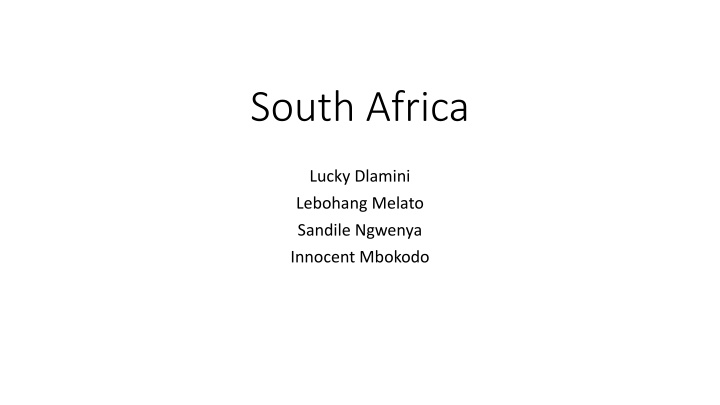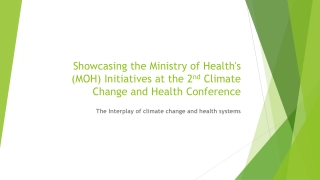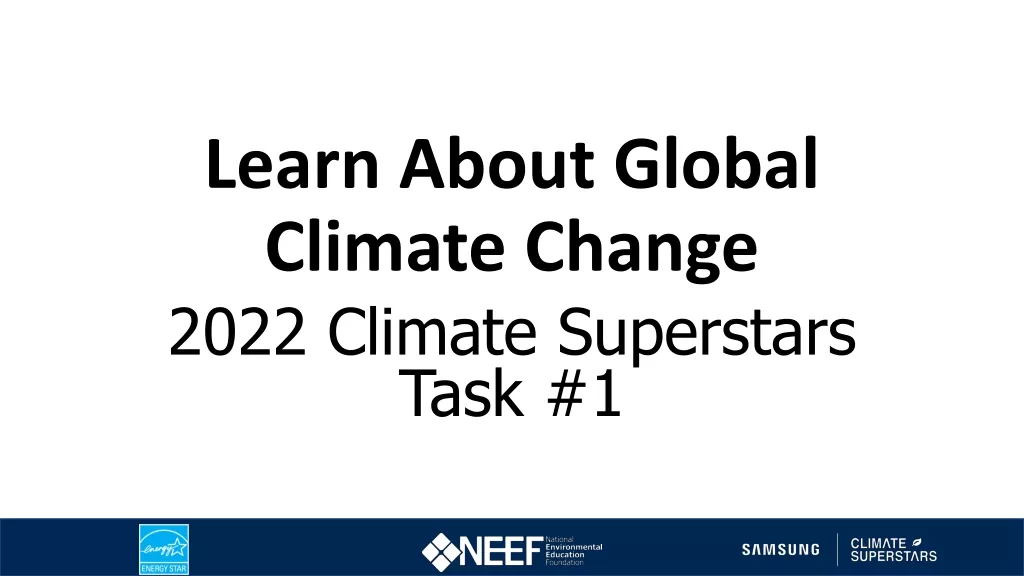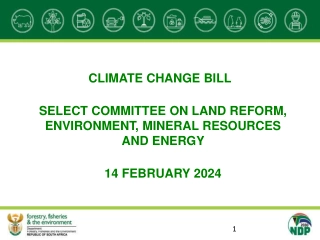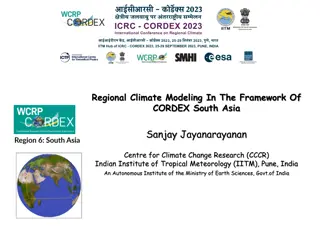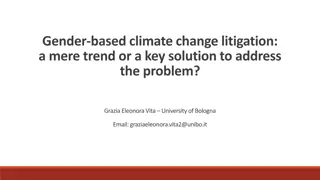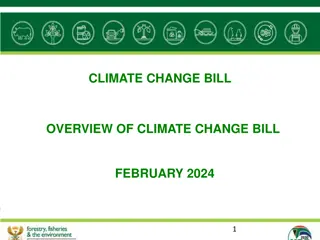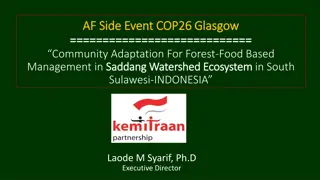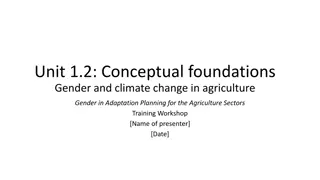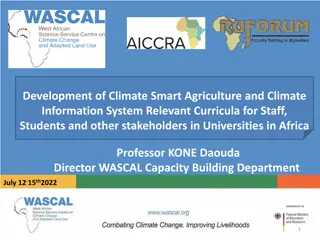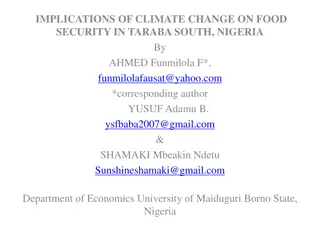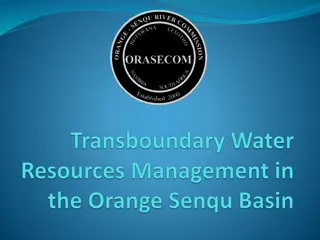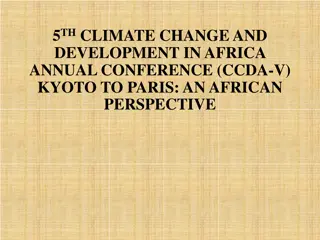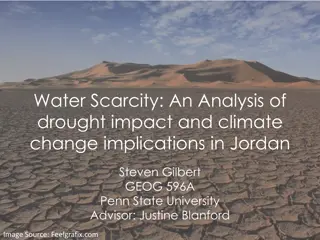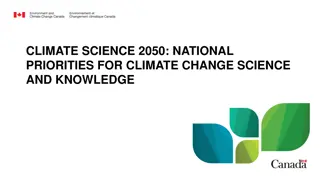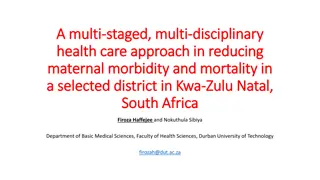Climate Change Implications in South Africa
Addressing the impacts of climate change in South Africa, including drought, floods, and heatwaves. Discussions on local technical capacities, gaps in datasets, and needed support for strengthening observational networks. Emphasis on capacity development and the effects of COVID-19 on client communication.
Download Presentation

Please find below an Image/Link to download the presentation.
The content on the website is provided AS IS for your information and personal use only. It may not be sold, licensed, or shared on other websites without obtaining consent from the author.If you encounter any issues during the download, it is possible that the publisher has removed the file from their server.
You are allowed to download the files provided on this website for personal or commercial use, subject to the condition that they are used lawfully. All files are the property of their respective owners.
The content on the website is provided AS IS for your information and personal use only. It may not be sold, licensed, or shared on other websites without obtaining consent from the author.
E N D
Presentation Transcript
South Africa Lucky Dlamini Lebohang Melato Sandile Ngwenya Innocent Mbokodo
Session 2 Implications of climate change in South Africa Drought: Persistence of drought at the region between 10 and 22oS (i.e drought corridor), thus affecting our agricultural yields. Floods: Trends of extreme rainfall due to climate change results in flash floods thus causing loss in animal life, property and crops. Heatwave: Predictions confirm that heatwaves are expected to be more frequent, last longer and be more intense from the year climate till end. :High temp and humidity causes thermal discomfort to elders (>65 years) and young children (0-5 years).
Session 2 Important climate information Past, present and future trends of precipitation and temperature. Identify single most important information needed Capacity development: Both climate service providers and users.
Session 3 Discuss what local technical capacity is Good observational network but due to our electricity power loadshedding schedule we tend to lose data as most station aren t are solar powered. Monitoring evaluation tool to indicate that the public is using the publications/products and how useful is the products.e.g we have a dictionary in explains scientific weather/climate terms in our official languages.
Session 3 Decide what needs to be strengthened and what support is needed. Human capacity and lack of skills to interpret some of our observation network e.g., radar system which we only get to use it to track the storm. Effects of Covid on our communication with clients: Our main source of communication with clients is telephonically and via email due to lockdown restrictions as we are currently working from home, our commercial clients are forced to contact us via email until we are officially back in the office. Clients prefer to discuss their enquiries face-to-face or telephonically as we get to explain our reports thoroughly making them confident to use our reports.
Session 3 Decide what needs to be strengthened and what support is needed. Gaps in datasets: Lack of data integration with other organization that might have the missing data. This is because their observatory network do not meet WMO standards, and they use different methods for their quality control measures which conflicts with our standards.
